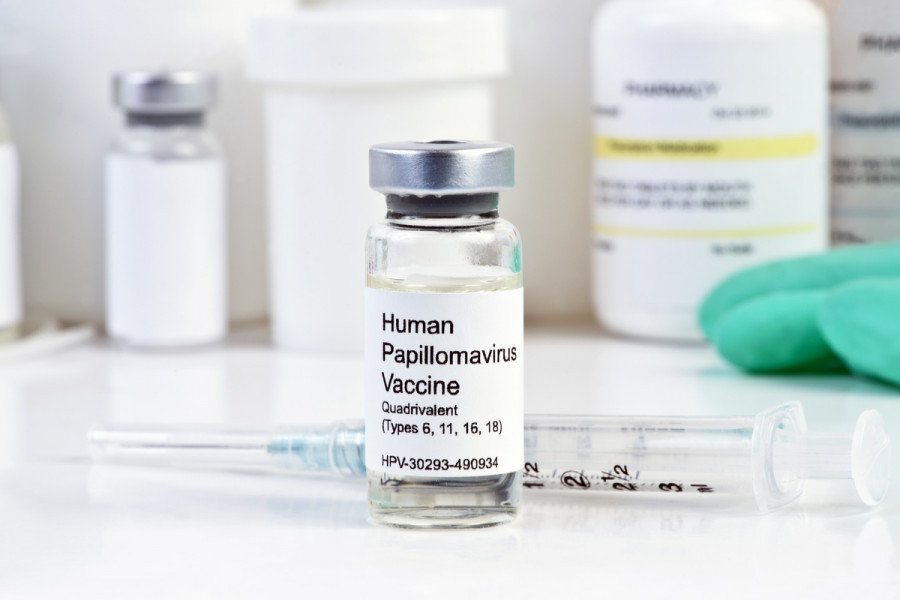Health
Ministry’s indecision deprives thousands of girls of HPV vaccine
The government purchased 20,000 doses of the vaccine in the first week of July.
Post Report
Despite having the vaccine doses in stock, the indecision of the Ministry of Health and Population has deprived thousands of girls from getting vaccinated against the human papillomavirus (HPV).
Nepal received 20,000 doses of the HPV vaccine in the first week of July that was supposed to be administered to 10,000 girls in the select districts.
“We sought permission from the health ministry to administer the vaccine doses before their arrival in the country,” an official at the Department of Health Services (DoHS) told the Post, asking not to be named, as he is not authorised to speak to the media. “But the ministry has not been able to make a decision about when to administer the vaccine doses.”
The Family Welfare Division of the department planned to administer vaccines to girls aged 11 to 13 years as a demonstration programme in some select districts where the size of the girls' population is low.
Human papillomavirus is a viral infection that spreads through skin contact. The virus causes cervical cancer, which is the second-most common cancer in the developing world and a major cause of deaths among Nepali women. It is estimated that hundreds of women get diagnosed with cervical cancer every year in Nepal.
According to the BP Koirala Memorial Cancer Hospital in Bharatpur, more than 700 women suffering from cervical cancer seek treatment at the hospital every year.
Experts say early treatment prevents up to 80 percent of cervical cancer.
The vaccine doses were purchased by the government itself. Each girl between 11 and 13 needs to be administered two doses of the vaccine over a period of six months.
“We will roll out the vaccine doses once the health ministry gives consent,” said Dr Abhiyan Gautam, chief of the Immunisation Section at the Family Welfare Division. “We are told that a decision in this regard [administration of HPV vaccine] will be taken soon.”
Officials said that they have proposed an HPV vaccination drive in seven sparsely populated districts, including Manang, Mustang and Ramechhap.
The World Health Organisation says HPV vaccination is recommended as part of a coordinated and comprehensive strategy to prevent cervical cancer and other diseases caused by the virus.
In 2019, the Ministry of Health and Population had allocated Rs 77.7 million to introduce the vaccine—Rs27.5 million to the Immunisation Section of the Family Welfare Division and Rs50 million to the BP Koirala Memorial Cancer Hospital in Bharatpur.
The hospital purchased 12,500 doses of the vaccine spending around Rs4,000 per dose while the government’s logistics management division failed to procure the doses on time, leading to a freeze in its budget.
More than 6,000 girls from Chitwan were inoculated with the vaccine at the time.
HPV vaccination also figured in the government’s policy and programme for the fiscal year 2021-2022 but the budget was not allocated accordingly.
Doctors say most cervical cancers are associated with HPV, a sexually-transmitted infection. Widespread immunisation with the HPV vaccine could reduce the impact of cervical cancer and other cancers caused by HPV worldwide.
Bhutan, Sri Lanka, Thailand and the Maldives have introduced HPV vaccines nationwide, while India and Indonesia have introduced them in some districts.
In 2016, Nepal piloted an HPV vaccination drive in Chitwan and Kaski districts. All girls aged between 11 and 13 years were inoculated with two doses of the vaccine at the time.
Nepal has also requested the Global Alliance for Vaccine and Immunisation to provide the HPV doses for free so that the vaccine could be included on the regular immunisation list.
The World Health Organisation says HPV is responsible for more than 70 percent of the cervical cancer cases in women. Countries that have included the HPV vaccine in their regular immunisation list have successfully reduced cervical cancer cases in women, according to doctors.




 18.12°C Kathmandu
18.12°C Kathmandu













